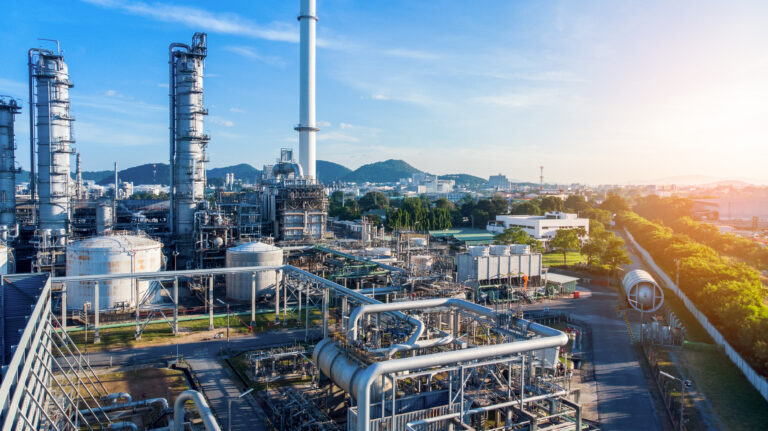

Hydrogen – dihydrogen to be precise – is the most abundant element of the universe. At atmospheric pressure, it takes the form of an invisible and odourless gas. Its current use essentially focuses on the chemical and petrochemical sectors for which hydrogen is used for its chemical properties.
Hydrogen is thus used as a reagent in crude petroleum refining processes (desulphurisation, hydrogenation), as an intermediate for the production of methanol or ammonia, or as a reducing gas to prevent certain industrial processes from oxidising (e.g. float glass). The global market is estimated at approximately 60 million tonnes per year, including 1 million tonnes on the French market, mainly from natural gas or as a petroleum by-product.

In addition to its “material” uses, hydrogen is attracting increasing interest as an energy carrier. Like electricity, hydrogen is not a source of energy, as it must be produced from a primary resource: hydrocarbon as is mostly the case on its traditional markets, but also bioenergy and water.
The water electrolysis process, powered by an electric current, allows water molecules to be split into hydrogen and oxygen. In practice, this pathway, which is not yet widespread, establishes a link between the electricity sector, which is rapidly reducing its carbon footprint, and the molecule sector that meets 80% of the world’s energy demand with natural gas, petroleum, or coal. As figured out by Jules Verne in the Mysterious Island, hydrogen found in water can become a key energy carrier, used directly by combustion, in a fuel cell or indirectly, in the form of recomposed molecules such as e-methanol or synthetic kerosene.
We develop, finance, build and operate low-carbon molecule production plants in France and in the iberian peninsula. Discover the application sectors of our products !
